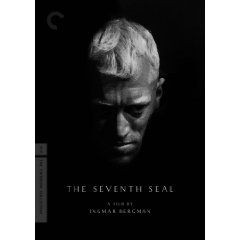
Starring: Michael Fassbender
Director: Steve McQueen
One doubts that any feature film could more maturely, passionately, or elegantly evoke the madness and confusion at the heart of the early-'80s IRA conflict than Irish director McQueen's harrowing docudrama Hunger. The film unfurls in 1981, around the tail end of the IRA prisoners' "no wash" strike against the Brits, and dramatizes the martyrdom of Irishman Bobby Sands, champion of a hunger strike within a penitentiary -- and a man who led at least nine of his fellow inmates to the grave in pursuit of unascertained political status. Yet the Sands tale only occupies the second half of the picture. Long before we can identify Sands or follow his crusade, he takes his time to establish the overall atmosphere of the prison and, more importantly, the profound and noble ideas at the core of his film.
The deepest truths and insights into his perspective arrive in an opening sequence, when we observe a British prison employee, Raymond Lohan gazing at himself in the mirror, with a weathered and disillusioned face. Lohan's deep-set, slightly pained eyes aren't eyes that lack a conscience, and his countenance will return to haunt our memories time and again throughout this picture -- likewise, his routine ritual of plunging his bloody, skinned knuckles into warm water to ease the pain. Lohan may be an administrator of brutality (like the other guards, he generates an adequate amount of disdain in the audience, and sympathy toward the prisoners via his brutal actions), but his ability to suffer makes him more human in our eyes -- as does his decision to take flowers to his catatonic mother. Our feelings toward the IRA remain equally balanced; not long after we witness the psychotically violent, perhaps fatal beating of an IRA prisoner (by a uniformed British guard), he interpolates an appalling, sickening act of violence from an IRA terrorist that redefines one's notion of shocking. It comes out of nowhere, unfolds in the sweetest and most benign of locations, and ends with the gunman practically jaunting away merrily, hands in his pockets. The central message is clear: the men on both sides of this fence are neither monsters nor saints. Both the guards and the suffering prisoners have been irrevocably plunged by fate into the same maelstrom of suffering.
Curiously, for a drama about the IRA, the first half of the film completely omits ideological argument and an exploration of the political goings-on at the core of this tumult. And that represents a deliberate choice. For the humanistic director, everything within the prison represents complete insanity -- from the fecal matter smeared on the cell walls, to the slop thrown into bedside troughs, to the maggots swarming around one sleeping prisoner's head, to the said beatings. At the heart of everything, the director reminds us, these men are men, who belong to the same human quilt, and the groups have mutually resigned themselves to the same pit of despair and masochism -- making all external conflicts irrelevant when held up next to the film's gut-wrenching plea for sympathy.
The picture then shifts gears dramatically at about the 45-minute mark, moving into the Sands story, and in what will go down as one of the most audacious directorial choices of 2008, he commits the film and the audience to a fixed shot and a single take for about 20 minutes. Sands (Fassbender) and a priest, Father Dominic Moran, sit on opposite ends of the same table, dissect the pros and cons of martyrdom, and fire arguments at one another on the progression versus regression of the IRA cause. The scene packs an emotional and intellectual wallop: he fully enables us to grasp (and possibly share) the priest's logic, his die-hard conviction that the notion of a hunger strike is absurd and pointless, and his belief that the IRA is a worthy cause but has lost its original foundation, just as the director explores the logic behind Bobby's rebuttals. The fixed shot is thus valuable for keeping the men equidistant from the audience, and underscoring the ideological balance present in the conversation. The film concludes with long, anatomically detailed, and thoroughly devastating sequences of the prisoner withering away to nothing, yet he laces the scenes with lyrical cutaways to Bobby's childhood, hallucinations that his childhood self is visiting him, and images of birds aloft, that draw out the grace and nobility within the man's soul and recall an identical metaphor in Dreyer's The Passion of Joan of Arc.(92 mins.)
My Rating: ***1/2

No comments:
Post a Comment